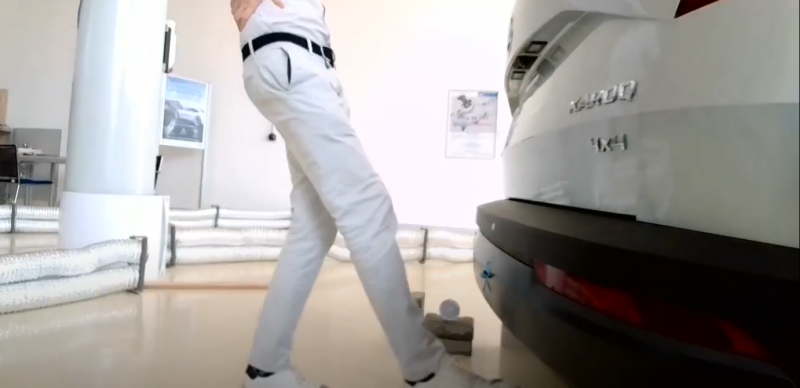This work presents the machine learning algorithm and architecture of a system used to open the fifth door automatically. A classical system deployed in production cars uses a capacity sensor installed just for this purpose. The capacity sensor is quite inaccurate because it is exposed to the dirt below the trunk. On the other hand, ultrasonic sensors installed in a bumper are relatively clean and kept functional, being used for safe parking. Ultrasonic sensors are mounted at a 50 cm distance from each other, so it is needed to process signals from several sensors simultaneously to obtain reliable detection of the user kick performed on different parts of the bumper. We used the Convolutional Neural Network architecture inspired by VGG to distinguish appropriate kick, expected to activate the opening of the fifth door, from the other moves of people and objects behind the car. The network compresses the time series of signals and consecutively aggregates the features to obtain the final descriptor over the whole time horizon of 3 seconds. Furthermore, we investigated the use of LSTM NN, progressively constructing the state description of the incoming signal. We have chosen suitable sensors up to their range and distance of sensitivity area. Further, we have designed and implemented several embedded systems that can process the ultrasonic signals and simulate them for the hardware-in-the-loop tests. Substantial work was devoted to the experiments with a real vehicle and fine-tuning the system structure and parameters. Validation tests revealed the system's good performance, and they showed a promising direction reusing ultrasonic car sensors for different purposes.





